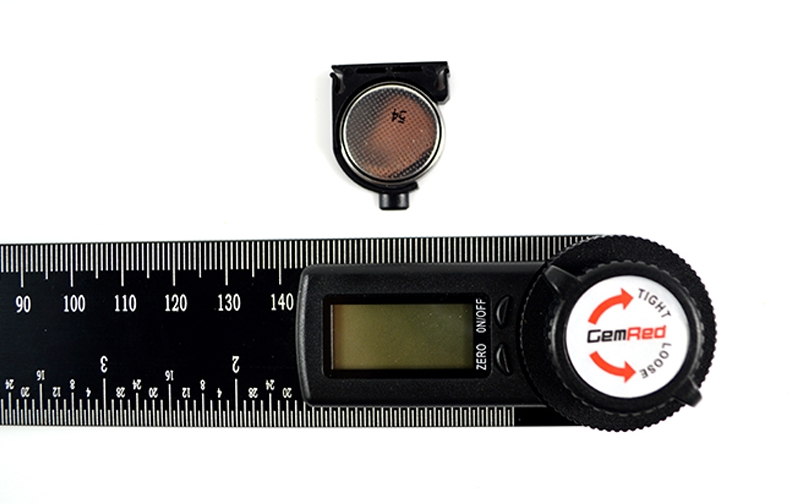Angle Ruler Staples for Precision Measurement
2024.03.14 / By hqt
Angle ruler staples, commonly known as protractors, are indispensable tools in numerous fields for measuring and assessing angles with precision. These tools come in various forms, from traditional semicircular protractors to digital angle rulers, catering to diverse measurement needs. Precision measurement holds significant importance across a spectrum of disciplines, including mathematics, engineering, architecture, and construction. Accurate angle measurement is vital for geometric calculations, architectural design, mechanical engineering, and many other applications where precise angles are crucial for achieving desired outcomes. Whether in educational settings, professional practices, or DIY projects, the ability to accurately measure angles is fundamental. Therefore, understanding angle ruler staples and their role in facilitating precise measurements is essential for success in various endeavors.
Types of Angle Rulers
Traditional Protractors
Traditional protractors are the most common type of angle ruler, consisting of a semicircular or circular shape with degree markings along the edge. They are typically made of transparent plastic or metal and often include a pivot point for accurate measurement. Traditional protractors are widely used in educational settings, DIY projects, and general-purpose applications due to their simplicity and affordability. They provide a straightforward method for measuring angles manually by aligning the pivot point with the vertex and reading the angle measurement on the scale.
Digital Angle Rulers
Digital angle rulers, also known as electronic protractors or angle finders, utilize digital technology to measure angles with precision. These devices feature a digital display screen that provides instant and accurate angle readings. Digital angle rulers often offer additional functionalities such as hold, zero, and calibration features, enhancing usability and accuracy. They are favored in professional settings, particularly in fields where precise angle measurements are critical, such as engineering, machining, and woodworking. Digital angle rulers eliminate the need for manual alignment and interpretation of scale markings, making them efficient tools for precise angle measurement tasks.

Specialized Angle Rulers for Specific Tasks
There are various specialized angle rulers designed for specific applications and tasks. These include adjustable angle rulers, which allow users to measure and replicate angles accurately for intricate designs and layouts. T-bevels, also known as sliding bevels, are adjustable angle rulers commonly used in carpentry and woodworking for transferring and setting angles. Combination squares, featuring a ruler and protractor combination, offer versatility for measuring and marking angles and lengths in carpentry, metalworking, and other trades. Additionally, specialized angle rulers tailored for specific industries or tasks, such as drafting templates for architectural drawings or angle gauges for machining operations, cater to specialized angle measurement needs.
Applications in Mathematics and Engineering
Geometry and Trigonometry
Angle rulers play a fundamental role in geometry and trigonometry, where precise angle measurements are essential for solving geometric problems, calculating trigonometric functions, and analyzing shapes and figures. In mathematics education, angle rulers are used to teach students about angles, angle properties, and geometric constructions.
Architectural and Engineering Drawings
Angle rulers are indispensable tools in architectural and engineering drawings, where accurate angle measurements are necessary for designing structures, drafting plans, and creating technical drawings. Architects and engineers use angle rulers to measure and layout angles for building components, structural elements, and geometric features in architectural designs, civil engineering projects, and mechanical drawings.
Mechanical and Structural Design
In mechanical and structural design, angle rulers are utilized for measuring and specifying angles in machinery, equipment, and structural components. Engineers and designers use angle rulers to ensure precise alignment and orientation of parts, angles of rotation, and geometric tolerances in mechanical assemblies, manufacturing processes, and structural frameworks. Angle rulers aid in the design and fabrication of machinery, tools, and mechanical systems, contributing to the functionality, reliability, and efficiency of engineered products and structures.
Features and Considerations
Measurement Accuracy
The accuracy of an angle ruler is a crucial consideration, particularly in tasks requiring precise angle measurements. Users should look for angle rulers with high accuracy ratings, typically expressed as the margin of error in degrees. Digital angle rulers often offer superior accuracy compared to traditional protractors, providing precise angle readings down to decimal increments.
Durability and Material
The durability and material composition of an angle ruler influences its longevity and performance in various environments. Traditional protractors made of sturdy plastic or metal are durable and suitable for general-purpose use. For more demanding applications, such as industrial settings or outdoor use, users may opt for angle rulers constructed from reinforced materials or featuring protective coatings to withstand harsh conditions and frequent handling.
Additional Features
Some angle rulers come equipped with additional features to enhance functionality and versatility. Straight edges integrated into the design facilitate measurements along straight lines, aiding in layout and drawing tasks. Ruler markings along the edges of angle rulers provide added convenience for measuring lengths and distances alongside angle measurements, eliminating the need for separate measuring tools.
Tips for Effective Use
Proper Alignment Techniques
To ensure accurate angle measurements, users should employ proper alignment techniques when using angle rulers. Align the pivot point or vertex of the ruler precisely with the starting point of the angle, and ensure the ruler remains flush with the surface or edge being measured to avoid errors caused by misalignment.
Avoiding Parallax Errors
Parallax errors occur when the angle ruler is viewed from an incorrect angle or perspective, leading to inaccuracies in measurement readings. To minimize parallax errors, position yourself directly in front of the angle ruler and view the measurement scale head-on, ensuring that the line of sight is perpendicular to the ruler’s surface.
Maintenance and Care Tips
Regular maintenance and proper care contribute to the longevity and accuracy of angle rulers. Keep angle rulers clean and free from debris or markings that may interfere with measurements. Store angle rulers in protective cases or pouches when not in use to prevent damage or deformation. Periodically check and calibrate digital angle rulers according to manufacturer recommendations to maintain accuracy over time.
GemRed Digital Angle Finder Protractor
Cutting-Edge Technology for Professional and DIY Projects
GemRed Digital Angle Finder Protractor is a state-of-the-art tool engineered to elevate the accuracy and simplicity of angle measurements across diverse applications. Tailored for carpentry, metalworking, construction, and architectural design, this digital protractor seamlessly blends durability, user-friendliness, and advanced precision technology.
Ideal for Beginners and Seasoned Experts Alike
This innovative ruler and protractor combination is a stellar choice for beginners, offering intuitive measuring capabilities that simplify complex tasks. Perfect as a gift for woodworkers, constructors, DIY enthusiasts, and professionals alike, it enhances convenience and versatility across a spectrum of projects.
Enhanced Readability with New Color Scheme
Featuring a sleek black ruler complemented by a crisp white scale, the new color scheme enhances readability, ensuring measurements are easily discernible. This update significantly improves visibility, leading to heightened accuracy and efficiency in measurement tasks, even in challenging lighting conditions.
Unmatched Precision for Every Project
This protractor has an impressive accuracy of ±0.3 degrees. Delivers unparalleled precision for a variety of projects and everyday use. Its compact folded length is approximately 7.5 inches (220mm) and the overall length extends to 400mm. Offers ample range and flexibility for a variety of measurement tasks.
Locking Function for Added Convenience
The GemRed angle viewfinder has a convenient locking feature. Allows the user to fix it at any desired angle for easy reading. This innovative feature enhances usability and ensures stability and accuracy during measurements. This simplifies a large number of projects and tasks with ease.
In Closing
The GemRed Digital Angle Finder Protractor stands as a testament to innovation and precision in angle measurement. Its cutting-edge technology, coupled with user-friendly features like the locking function and enhanced readability, revolutionizes the way professionals and DIY enthusiasts approach their projects. Whether in carpentry, metalworking, construction, or architectural design, this protractor offers unmatched accuracy and convenience. From beginners to seasoned experts, its versatility and reliability make it an indispensable tool in the toolkit. With the GemRed Digital Angle Finder Protractor, achieving precise angle measurements has never been easier, empowering users to elevate the quality and efficiency of their work with confidence and ease.
